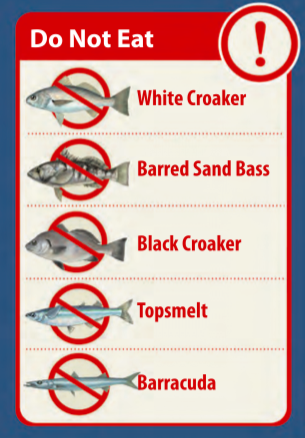Spotlight on Venice Pier, a Favorite Fishing Location in Santa Monica Bay

Heal the Bay’s Angler Outreach Program Manager, Frankie Orrala, highlights the history and significance of Venice Pier.
The Santa Monica Bay, spanning from Point Dume in Malibu to the Palos Verdes Peninsula, offers spectacular beaches and fabulous scenic views, as well as fishing piers. Several piers stretch out into the bay, in Malibu, Santa Monica, Venice, Manhattan Beach, Hermosa Beach, and Redondo Beach. Because fishing licenses are not required on piers, they are some of the most popular spots for recreational and subsistence (those who are fishing for food for their family/relatives) anglers.
Venice Pier is one of the oldest, most active piers when it comes to Southern California fishing. Venice Pier, built in 1965, was closed for more than a decade starting in 1986 due to damage and disrepair, but was triumphantly re-opened to the public in 1997 thanks to the vocal advocacy of local residents. The restored pier is fully accessible, with lights, benches, and fish cleaning stations. The surface of the pier is made of concrete and has designated areas for wheelchair accessibility. The pier is managed by the City of Los Angeles Department of Parks and Recreation and is open to the public from 6 a.m. until midnight.
Fishing at the Venice Pier is relaxing and many anglers enjoy this place for its tranquility, for the occasional presence of sea lions, dolphins, a variety of seabirds, and because there are no shops or restaurants that disturb the serious anglers’ focus. Over the years, I have observed a number of different species caught off of this pier, including mackerel, sardines, topsmelt, jacksmelt, corbina, white croakers, surfperch, opaleye, rays, and certain types of sharks.
The Venice Fishing Pier attracts a wide diversity of anglers, and you will often hear a variety of languages such as Spanish, Tagalog, Vietnamese, Chinese, and Russian, among others spoken by the fishermen. Heal the Bay has worked on this pier for 17 years through the Angler Outreach Program (AOP), educating anglers about fish contamination in all 5 of these languages, particularly to help educate them about the dangers of consuming fish which contain high levels of contaminants.
 If you’ve been to the Venice Pier, you may have noticed that it, as well as other piers in Santa Monica Bay, has signs posted by the U.S. Environmental Protection Agency to inform anglers about the risks of consuming contaminated fish. Venice is within the red zone established by the California Office of Environmental Health Hazard Assessment (OEHHA), which indicates a higher level of health risk from consuming certain fish in these areas. However, many anglers are still unaware that there are certain fish that should not be consumed due to their high levels of DDT, PCBs, and Mercury. One of the goals of the Angler Outreach Program is to educate anglers about the riskiest fish, which are white croaker, topsmelt, barred sand bass, black croaker, and barracuda. Due to high concentrations of contaminants, these fish should not be consumed.
If you’ve been to the Venice Pier, you may have noticed that it, as well as other piers in Santa Monica Bay, has signs posted by the U.S. Environmental Protection Agency to inform anglers about the risks of consuming contaminated fish. Venice is within the red zone established by the California Office of Environmental Health Hazard Assessment (OEHHA), which indicates a higher level of health risk from consuming certain fish in these areas. However, many anglers are still unaware that there are certain fish that should not be consumed due to their high levels of DDT, PCBs, and Mercury. One of the goals of the Angler Outreach Program is to educate anglers about the riskiest fish, which are white croaker, topsmelt, barred sand bass, black croaker, and barracuda. Due to high concentrations of contaminants, these fish should not be consumed.
Heal the Bay’s Angler Outreach Team aims to educate pier anglers about the dangers of consuming high-risk fish species, and make recommendations about the consumption of other fish within the red zone. Any other fish that is not on the list of the most contaminated should be consumed according to the regulations established by the health authorities. The safest way to prepare the fish is to only eat the fillet, discarding head, skin, and innards.
While Heal the Bay’s Angler Outreach Program is observing safety measures due to COVID-19, we are still educating folks about the issue through our blog posts, social media, and educational presentations in English and Spanish— and we are eagerly looking forward to a time when we can get back out and talk directly to anglers.



